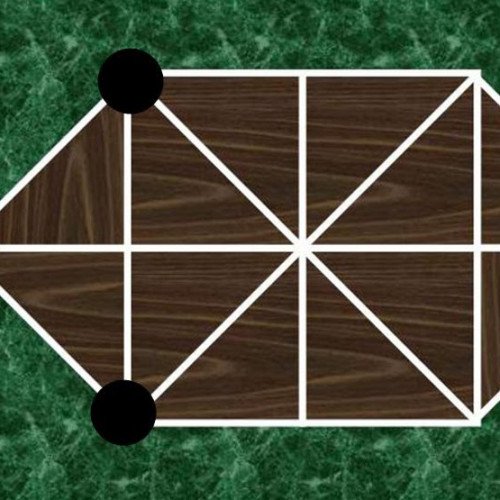HARE AND HOUNDS VS STRATEGO

HARE AND HOUNDS
Hare games are two-player abstract strategy board games that were popular in medieval northern Europe up until the 19th century. In this game, a hare is trying to get past three dogs who are trying to surround it and trap it. The three dogs are represented by three pieces which normally start on one end of the board, and the hare is represented by one piece that usually starts in the middle of the board or is dropped on any vacant point in the beginning of the game. Hare games are similar to Bear games and hunt games. One side has more pieces than the other with the larger side attempting to hem in the smaller side. The smaller side though is usually compensated with more powers. Where Hare games differ is that the hounds can only move forward or sideways, and not backwards. The hunters in the Bear games can move in all directions. Furthermore, the dog in the Hare games cannot capture any of the hares, unlike the tigers, leopards, jaguars, and foxes in the hunt games which can capture their respective prey counterparts. There are several different Hare game boards depending upon the country of origin. Many preferred the narrow double-ended spearhead-like boards with orthogonal and diagonal lines running through them. There were several variations on this design. However, one in Denmark used a round board, and another design is found in Latvia. Hare games are referred to by different names. In 19th century France, a hare game that was popular among the military was called The Soldiers' Game. The dog is sometimes referred to as a hound, and hence the alternative title to this game as Hare and hounds. Other names are French Military Game, Game of Dwarfs, The Devil among tailors, and Trevolpa or Volpalejden . As the rules of the game are simple to program, there are many electronic implementations of the game. The second link below allows you to play this game. In this computer game, the hares and hounds are reversed. Instead, it is the hounds attempting to surround and immobilize the hare.
Statistics for this Xoptio

STRATEGO
Stratego is a strategy board game for two players on a board of 10×10 squares. Each player controls 40 pieces representing individual officer and soldier ranks in an army. The pieces have Napoleonic insignia. The objective of the game is to find and capture the opponent's Flag, or to capture so many enemy pieces that the opponent cannot make any further moves. Stratego has simple enough rules for young children to play but a depth of strategy that is also appealing to adults. The game is a slightly modified copy of an early 20th century French game named L'Attaque. It has been in production in Europe since World War II and the United States since 1961. There are now two- and four-handed versions, versions with 10, 30 or 40 pieces per player, and boards with smaller sizes (number of spaces). There are also variant pieces and different rulesets. The International Stratego Federation, the game's governing body, sponsors an annual Stratego World Championship. The name Stratego was first registered in 1942 in the Netherlands. The United States trademark was filed in 1958 and registered in 1960 to Jacques Johan Mogendorff and is presently owned by Jumbo Games as successors to Hausemann and Hotte, headquartered in the Netherlands. It has been licensed to manufacturers such as Milton Bradley, Hasbro and others, as well as retailers such as Barnes & Noble, Target stores, etc. The game box contents are a set of 40 gold-embossed red playing pieces, a set of 40 silver-embossed blue playing pieces, a glossy folding 15 1⁄2 in × 18 1⁄2 in (39 cm × 47 cm) rectangular cardboard playing board imprinted with a 10×10 grid of spaces, and instructions printed in English on the underside of the box top. The early sets featured painted wood pieces, later sets colored plastic. The pieces are small and roughly rectangular, 1 in (25 mm) tall and 3⁄4 in (19 mm) wide, and unweighted. More modern versions first introduced in Europe have cylindrical castle-shaped pieces. Some versions have a cardboard privacy screen to assist setup. A few versions have wooden boxes or boards.